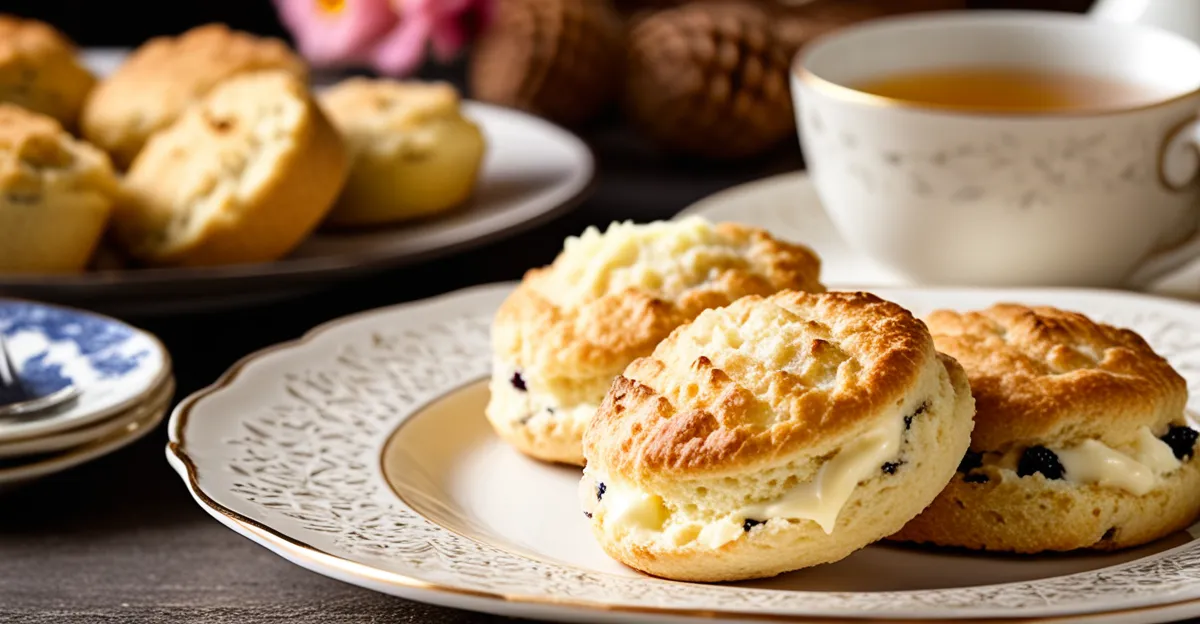Essential Ingredients and Preparations for Classic Scones
Creating traditional scone ingredients accurately is key to a successful British cream tea recipe. The essential components include:
- 225g self-raising flour, sifted
- 1 tsp baking powder
- 50g cold unsalted butter, diced
- 25g caster sugar
- 150ml whole milk (plus extra to glaze)
- A pinch of salt
These measurements maintain the delicate balance needed for authentic scones. Preparation begins by rubbing the chilled butter into the flour mix to create a crumbly texture. Adding sugar enhances the subtle sweetness expected in a classic scone, essential for pairing with clotted cream and jam.
Also to see : How do you make a traditional Welsh rarebit from scratch?
Using the right kitchen tools greatly influences the outcome. A pastry cutter or fingertips work best to mix ingredients without warming the butter. A sharp round cutter ensures even sizing, promoting uniform baking. Chilling the dough briefly before shaping helps prevent spreading and contributes to a light, crumbly texture.
Following these scone baking tips enhances both texture and rise. The balance between the dry ingredients and wet milk must be precise; too much liquid results in dense scones, while too little leads to dry, crumbly results. Careful preparation will help you achieve scones worthy of a traditional British cream tea recipe experience.
Also read : How do you achieve the ideal consistency for a sticky toffee pudding?
Step-by-Step Method for Baking Perfect Scones
Mastering how to bake scones starts with correctly mixing the traditional scone ingredients. After combining sifted self-raising flour, baking powder, cold diced butter, caster sugar, and salt, add whole milk gradually. The goal is a soft but not sticky dough that holds together. Over-mixing should be avoided to keep scones light and crumbly.
For shaping, gently pat the dough to about 2cm thickness. Use a sharp round cutter to cut scones cleanly—this ensures even baking and proper rise. Pressing the cutter straight down without twisting prevents scones from sealing at the edges, which can hinder rising.
Bake the scones in a preheated oven at 220°C (425°F) for approximately 12-15 minutes or until golden brown. Applying a milk glaze before baking gives a lovely shine and soft crust. After baking, cool on a wire rack to avoid sogginess from trapped steam.
By following these scone recipe instructions carefully, you will produce consistent, light, and fluffy scones, crucial for a delightful British cream tea recipe experience. Utilizing the right baking process, from mixing to baking, is essential to perfect results every time.
Achieving Ideal Scone Texture and Appearance
Achieving the best scone texture means focusing on lightness and crumbly softness. The key is gentle handling during the mixing and shaping stages. Overworking the dough causes gluten to develop, resulting in tough scones, so follow the recommended scone baking tips to keep the dough tender.
A major mistake to avoid is adding too much liquid. The dough should be soft but not sticky. If it is sticky, incorporate a small amount of flour carefully to maintain balance. Avoid twisting the cutter when shaping scones; this seals edges and prevents proper rising, negatively impacting scone results.
To check doneness, look for a golden crust and a light spring when lightly pressed. Baking times vary but typically range from 12 to 15 minutes at 220°C (425°F). Remove the scones onto a wire rack immediately after baking. Cooling on a rack prevents trapped steam, which can lead to soggy bottoms, ruining the ideal crumbly texture.
Following these scone baking tips ensures consistently excellent scone results with the delicate layers and texture essential for an authentic British cream tea recipe. Attention to detail in preparation and baking heightens the enjoyment of this classic treat.







